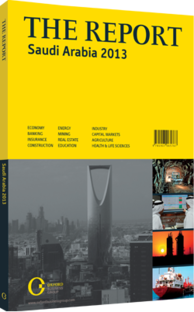Offering an alternative: Private institutions look set to play a growing role in the sector
Running in parallel to the Kingdom’s state-funded drive to enhance the sector is an influx of private schools sprouting up across the country. Although only 10% of Saudi students attend one of the 840-odd private schools, according to the Saudi Arabian General Investment Authority (SAGIA), these institutions offer strong alternatives for those willing to pay for them. Much of the new demand is driven by socio-economic and demographic trends that have meant more families now have the means to afford extra expenditure on education, while at the same time the government has relaxed restrictions on foreign organisations teaching within the country – particularly in the new economic cities. And while private tertiary institutions have made the most inroads into the Saudi Arabian market so far, new primary and secondary schools are also being opened at an increasing rate.
Going Private
Revenue from private sector education grew by 40% from 2007 to 2011 to an estimated total of SR1.25bn ($300m), according to one study from the Parthenon Group, an advisory firm. Out of this total, roughly half of all private higher education revenue is derived from medical courses, which are experiencing annual growth rates of 45%. This growth is being driven by three primary factors that, not coincidentally, also differentiate the most sought-after programmes from the less expensive and more widely available private sector offerings. The first is employability in the private sector as evidenced by the fact that more than 80% of students in private schools are enrolled in disciplines favoured by employers such as health care, management, IT and engineering. Quality English language instruction is another hallmark of the private sector, which has remained an acknowledged area of difficulty in public institutions despite continued efforts. Finally, private schools are now the only options for expatriate students as public universities stopped accepting foreign students in August 2012.
Economic Cities
Much of the expansion of the private sector has occurred in conjunction with the government’s economic development and diversification initiatives that seek to enhance the competitiveness of the economy by creating new jobs and improving Saudis’ skill levels. With a specific emphasis on developing knowledge-based industries requiring a highly educated workforce, private institutions have gravitated towards the new economic cities, including the King Abdullah Economic City (KAEC), Prince Abdulaziz bin Musaed Economic City and Knowledge Economic City.
Internal Rate Of Return
Many of the investments recently promoted by SAGIA, for instance, are located within these economic cities. Five of these projects are in various stages of development at KAEC alone as part of its Education Zone. These include the K-12 Bay La Sun school with a 1000-student capacity. The largest private education project in KAEC is the World Academy operated by UAE-based Global Educational Management Systems, which opened its doors to students in 2010. Estimated to cost some SR178m ($47.44m), the K-12 boarding school can accommodate up to 2000 students in a 70,000-sq-metre campus. A third K-12 boarding school is also planned for KAEC with an impressive internal rate of return (IRR) estimated at 37.71% on an investment of SR28.9m ($7.70m).
Not to be left out, tertiary institutions are also represented with a teachers’ college affiliated with the prestigious US-based Columbia University. Estimated to cost SR50m ($13.33m) with an IRR of 17-20%, the teacher-training institute has courses for K-12 educators. The SR18.76m ($5m) Thunderbird School of Global Management also offers two-year executive MBA courses for 25 students per year. To accommodate the strong and still growing demand for medical training, SAGIA has listed one final investment opportunity in the Jeddah University for Medical and Allied Health Sciences. Requiring an investment of SR1.97bn ($525m) and developed by the American University in Beirut, the school would provide sought-after programmes such as general medicine, nursing, pharmacology and health sciences, to accommodate up to 2000 students.
You have reached the limit of premium articles you can view for free.
Choose from the options below to purchase print or digital editions of our Reports. You can also purchase a website subscription giving you unlimited access to all of our Reports online for 12 months.
If you have already purchased this Report or have a website subscription, please login to continue.

